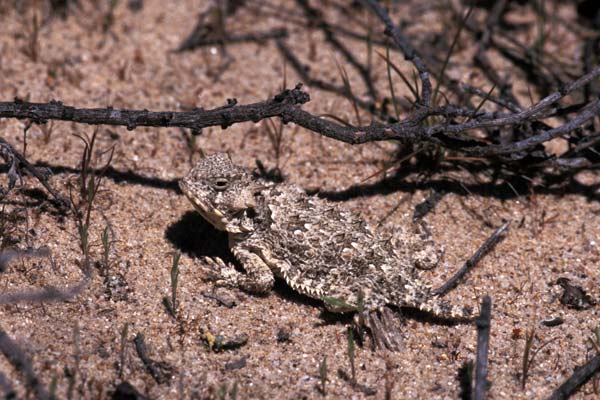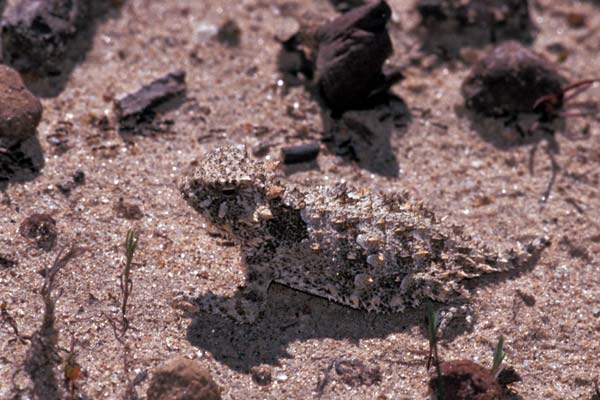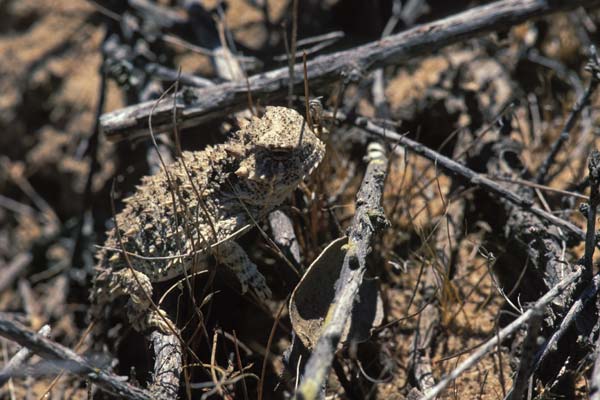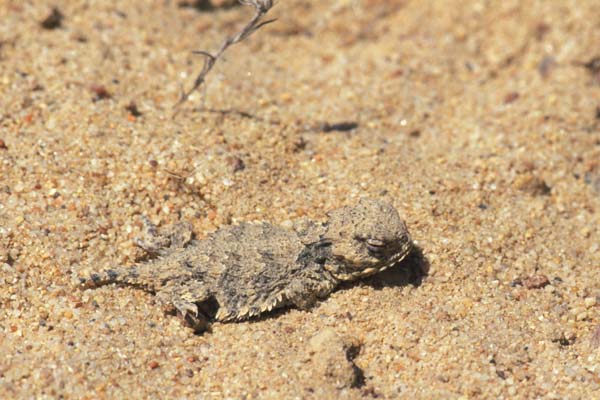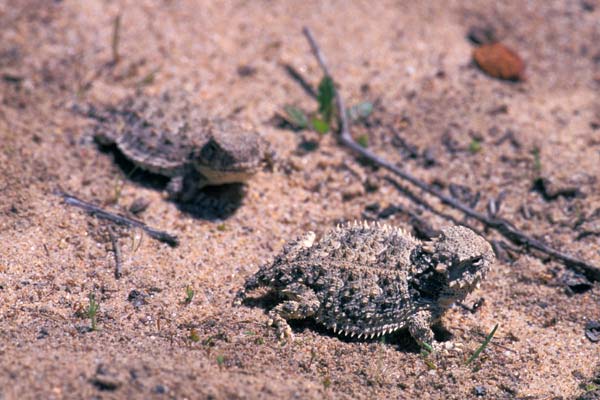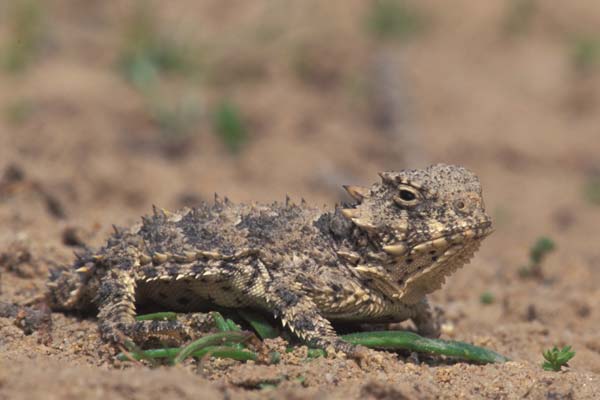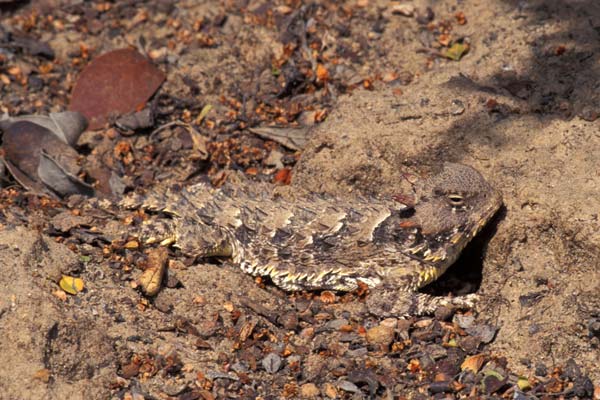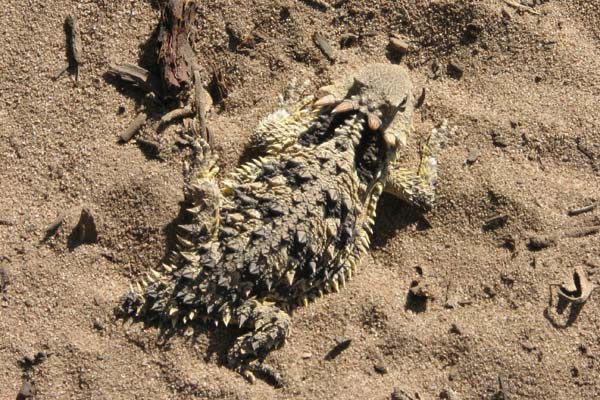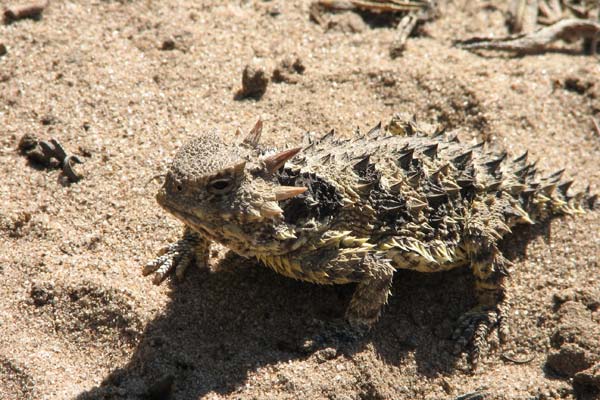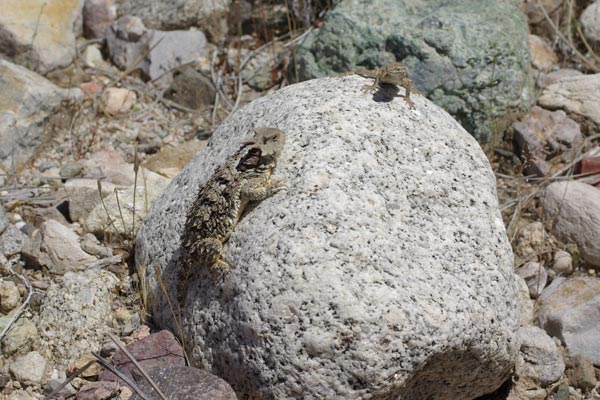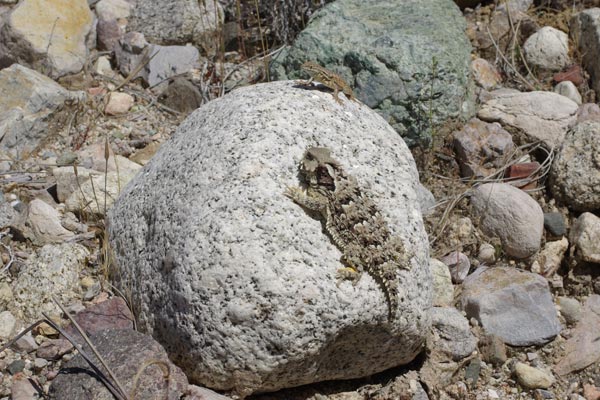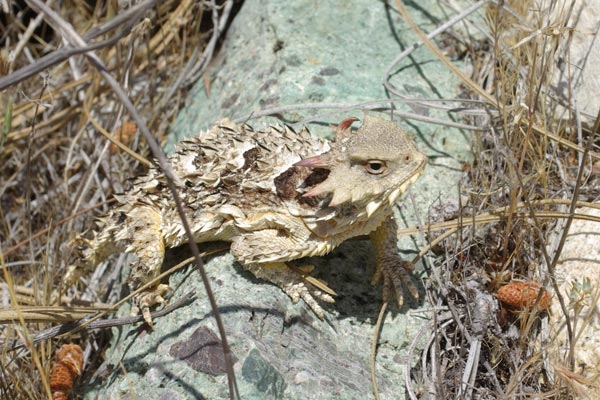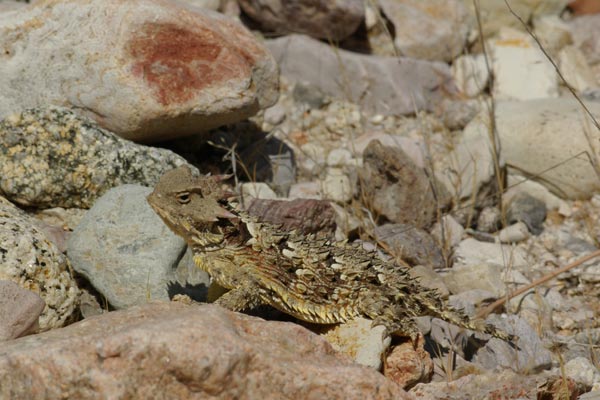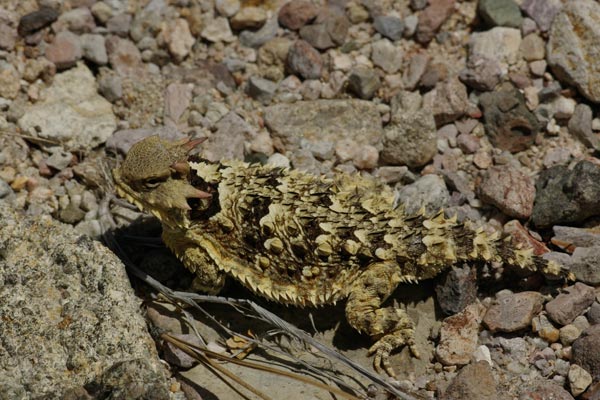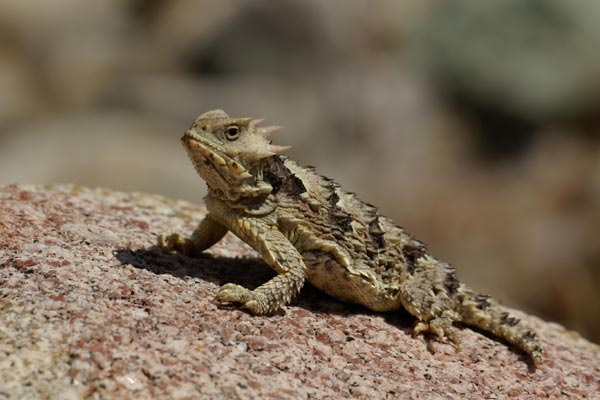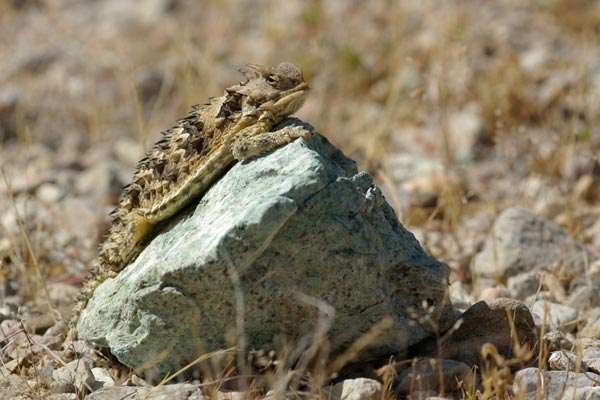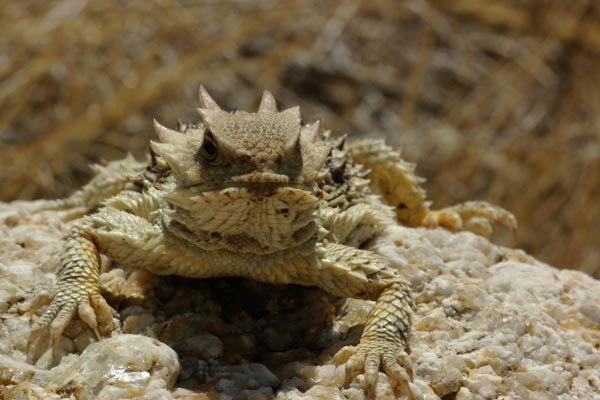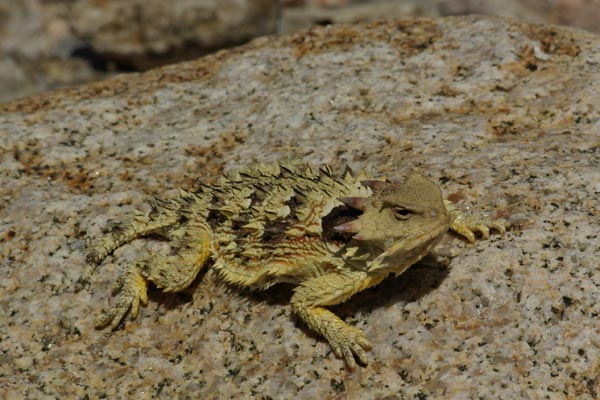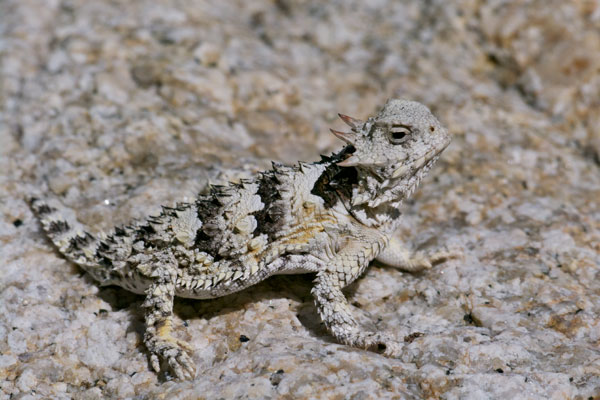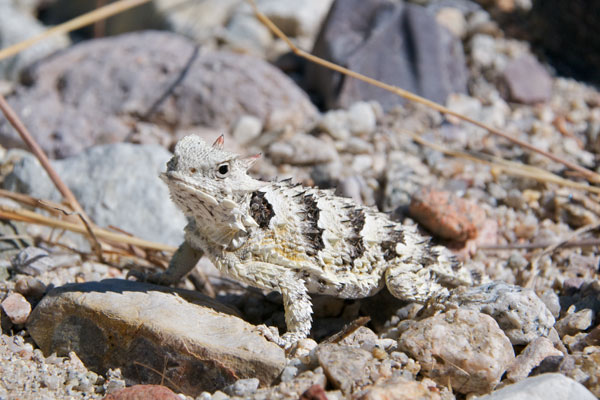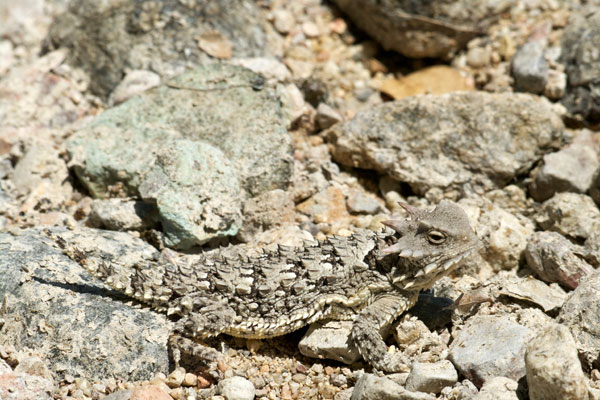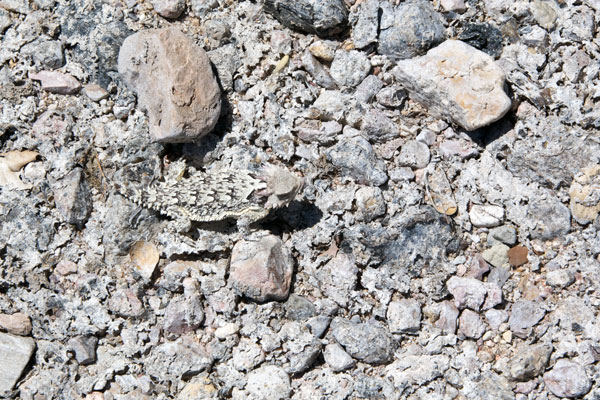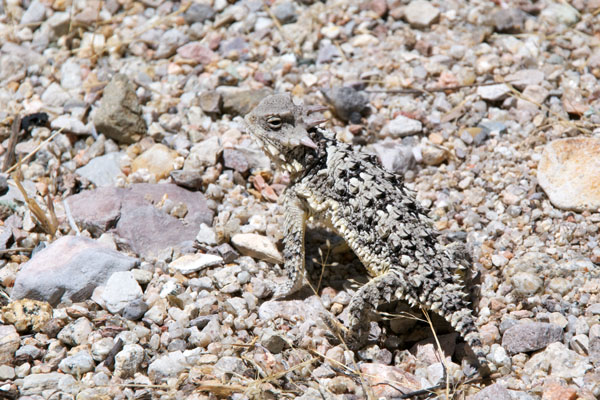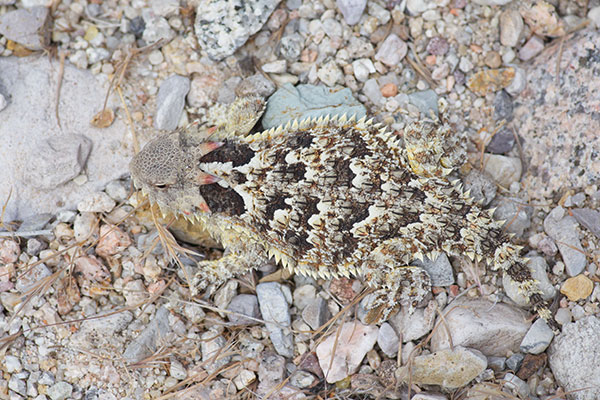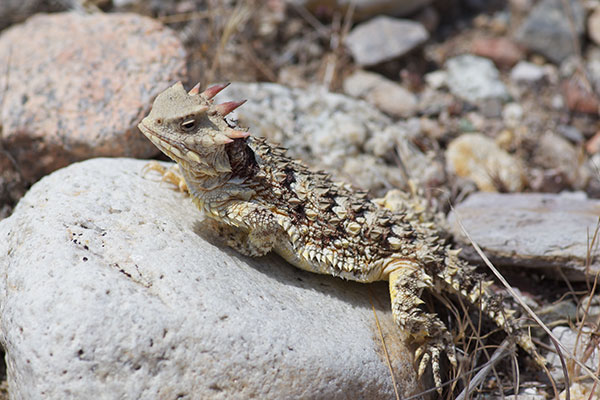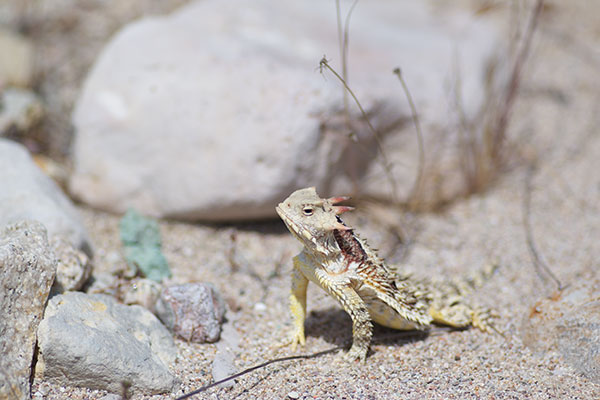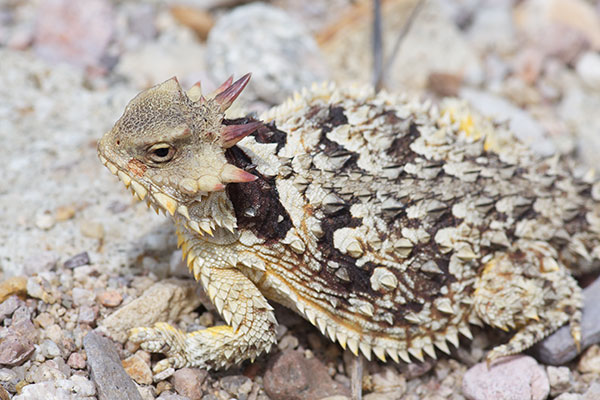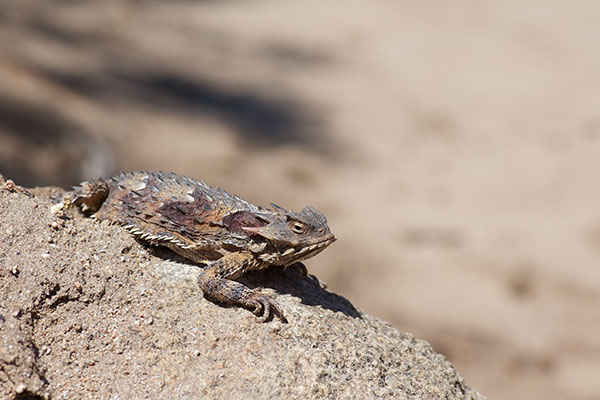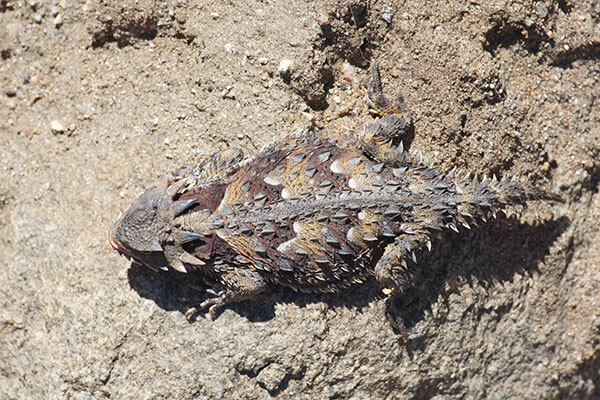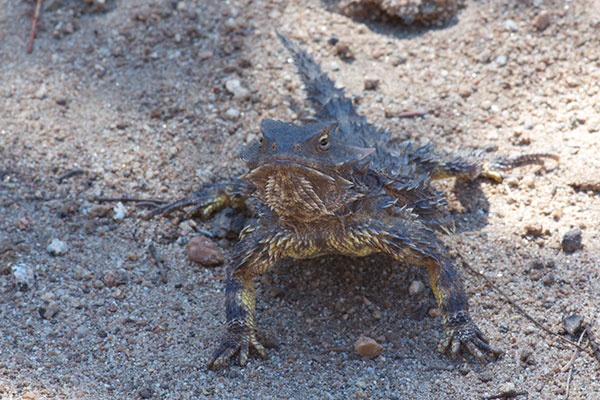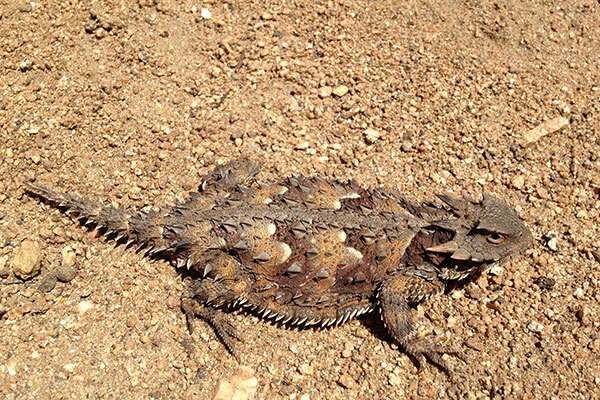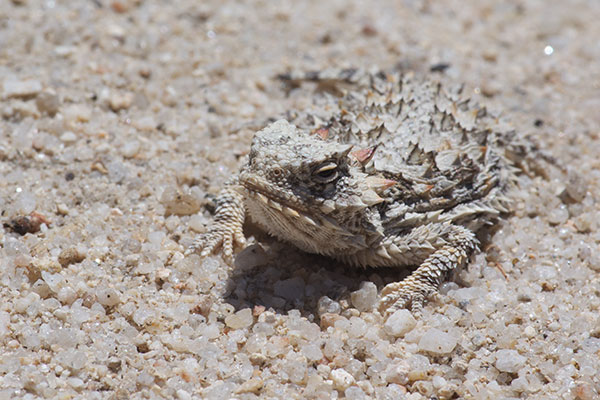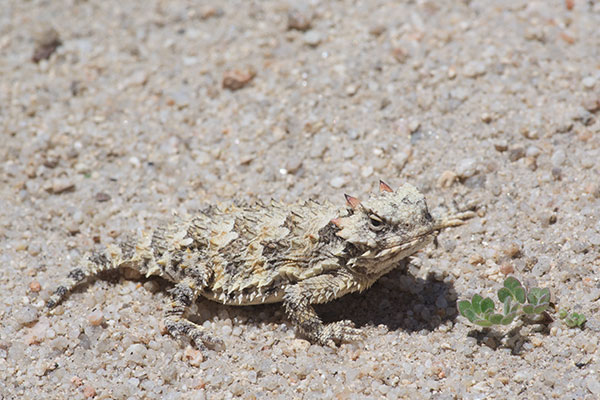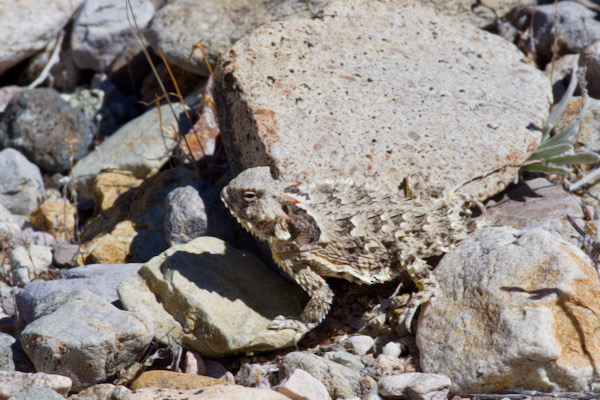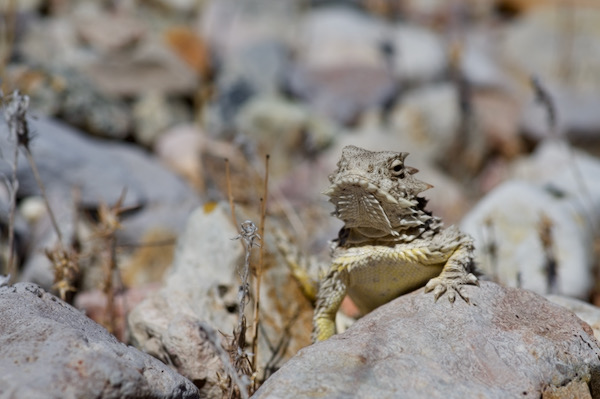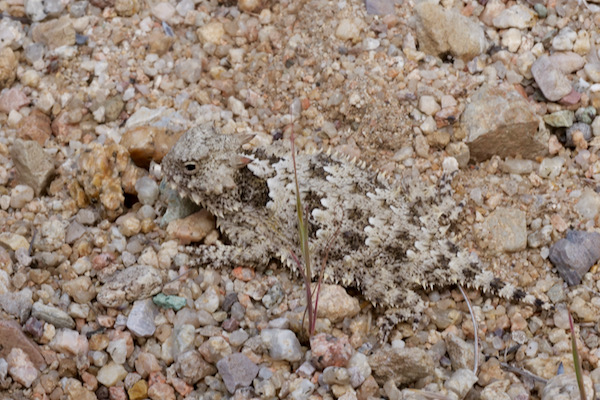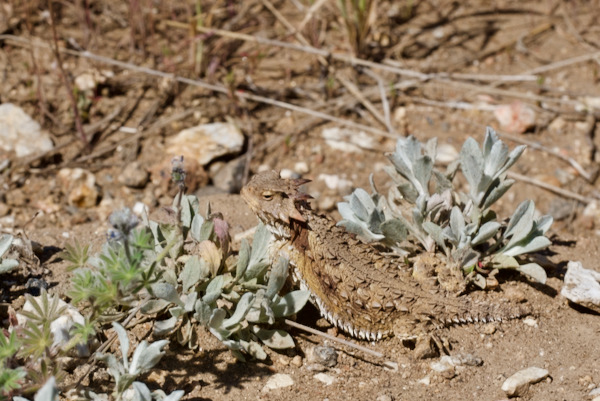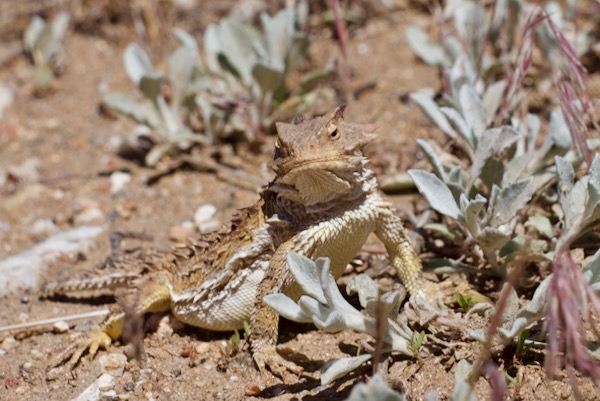Phrynosoma blainvillii
—
Blainville’s Horned Lizard
Also known as:
Pacific Coast Horned Lizard, Coast Horned Lizard
Montanucci presented evidence in 2004 that the group of horned lizards formerly known as
Phrynosoma coronatum (Coast Horned Lizard) comprised four separate species.This evidence was accepted by the
SSAR names book that I follow on this site.
Fort Ord Public Lands, Monterey County, California—April 2, 2000
I had searched for Phrynosoma blainvillii at Pinnacles National Monument, in the Ventana Wilderness, and at Fort Ord Public Lands at least 10 times in the past two years with nary a horned lizard sighting to show for it. Finally, after a friendly Bureau of Land Management ranger told me where he had seen them, I came across these two youngsters on a sandy trail. There's nothing cuter than a pouty little horned lizard, I say.
Fort Ord Public Lands, Monterey County, California—August 20, 2000
More very young horned lizards awaited me on a return trip to the same site more than four months later. I was surprised to still discover no adults, but this time I saw five youngsters. The second one pictured above is the smallest horned lizard I've ever seen, no more than an inch long from its pouty little snout to the tip of its tail.
Fort Ord Public Lands, Monterey County, California—March 31, 2001
I still haven't seen an adult, but I found four more of the cute little tykes on the first hot day of spring. The one in front was a feisty little critter. It puffed up with air and kept its back held toward me to look as big as possible (which isn't very big when your total length is a maybe two and a half inches).
Fort Ord Public Lands, Monterey County, California—April 6, 2002
At long last an adult Blainville's Horned Lizard put in an appearance for me, along the same trail where I had seen youngsters several times. The top photo here is in fact another youngster, but that second one is a full-grown adult.
La Purisima Mission State Historic Park, Santa Barbara County, California—February 25, 2006
We chose to visit, and then hike at, La Purisima Mission State Historic Park due to its dog-friendly nature. The scrubby chaparral reminded Monica of Fort Ord, and she speculated that perhaps there would be horned lizards. A few minutes later this charming fellow waddled across the trail in front of me, as if on cue. It's missing the tip of its tail. Unlike many types of lizards, horned lizards don't regenerate their tails, so this guy will be stubby-tailed for the rest of its days.
Pinnacles National Park, San Benito County, California—May 19, 2007
After many failed attempts to find
Phrynosoma blainvillii at Pinnacles National Monument, I finally found success in a rocky riverbed. The first horned lizard of the day was mildly agitated by our insistent photography and jumped up onto a rock in a feeble, horned-lizard-style attempt to get away. The rock was previously occupied by a
side-blotched lizard, who seemed to take some offense at this incursion and, rather than giving ground immediately, initiated a head-bobbing display. The horned lizard responded with head-bobbing of its own. This is the first time I've seen such obvious inter-species communication in lizards. After a brief but no doubt tense standoff, the horned lizard moved forward a little and the side-blotched lizard raced off.
We saw another horned lizard a little while later, which had one of its head horns curled back.
Pinnacles National Park, San Benito County, California—May 26, 2007
I returned a week later with my horned-lizard-loving friends Jackson and Fred, and their horned-lizard-admiring wives Mela and Angie, to see if we could repeat my luck. A horned lizard bonanza ensued. Note that Ol' Curly Horn from the previous week put in another appearance.
Pinnacles National Park, San Benito County, California—July 3, 2011
I hadn't spent much time herping locally this year, and so was really looking forward to spending a day at Pinnacles. I chose to start in the same area where I had seen a number of horned lizards four years earlier (Four years! I haven't been to Pinnacles in
four years! What is
wrong with me?).
I arrived at about 9 AM to discover that this was to be a blisteringly hot day; it was already at least 90 degrees. I searched carefully for horned lizards for an hour or so with no luck. I didn't even see any (very recognizable) horned lizard poops, which was making me worry that this population had died out. But my worries were dispelled when this half-sized lizard dashed across the trail in front of me. Did I say "dashed"? I meant "waddled determinedly".
Pinnacles National Park, San Benito County, California—July 23, 2011
To ensure that I wouldn't wait four years between visits to Pinnacles, I headed back three weeks later, this time with my friend Andrew. Andrew hadn't seen a horned lizard in thirteen or fourteen years, and so was rightfully delighted when he flushed this well-camouflaged fellow out of its plain-sight hiding place.
The day was considerably less hot than July 3 had been, and we found three horned lizard poops fairly quickly before finding this guy. So now I'm thinking that the local population is probably just fine, thankyouverymuch, and my difficulty in finding any sign of Phrynosoma on July 3 had been primarily due to that day's blistering heat.
Pinnacles National Park, San Benito County, California—May 8, 2013
My periodic Phrynosoma pilgrimage to Pinnacles was particularly successful. I found four of these little beauties in an hour or so. Note that the last picture shows some dried blood below the eye. This lizard must have recently tried to scare off a predator by squirting blood from its eye, as several species of horned lizards are wont to do.
near Parque Nacional Constitución de 1857, Baja California, Mexico—May 14, 2013
I spotted my first, second, and third Mexican horned lizards as Lorrie Smith, Matt Cage, and I drove up the dirt road leading to the mellifluously-named Parque Nacional Constitución de 1857. The second one evaded us, but the first one (large adult) and second one (youngster) were reasonably willing to pose.
Pinnacles National Park, San Benito County, California—July 6, 2020
I hadn't been back to look for horned lizards at Pinnacles National Park for a number of years. I have no excuse for this ridiculous behavior, but here is a cute young Phrynosoma blainvillii to partly make up for it.
Pinnacles National Park, San Benito County, California—April 6, 2021
I'm trying to get back into the habit of regular visits to my favorite nearby lizards. Just one little one this time, but one is enough to make any day into a Horned Lizard Day, which is the best kind of day.
Volcan Mountain Trail, San Diego County, California—May 27, 2021
This proud and healthy horned lizard made my day, as is generally the case for any horned lizard. It was both more active and less wary than most of the horned lizards I come across; I sat nearby for ten minutes or so while it strutted around posing and giving me curious looks.
Online references:
- Eric Pianka and Wendy Hodge's excellent article on horned lizards, from the University of Texas.
Printed references:
- Behler, J. L., King, F. W. 1979. The Audubon Society Field Guide to North American Reptiles & Amphibians
- Conant, R., Collins, J. T. 1998. Peterson Field Guide to Reptiles and Amphibians of Eastern and Central North America, Third Edition, expanded
- Crother, B. I. (ed.) 2017. Scientific and Standard English Names of Amphibians and Reptiles of North America North of Mexico, with Comments Regarding Confidence in Our Understanding, Eighth Edition
- Grismer, L. L. 2002. Amphibians and Reptiles of Baja California Including its Pacific Islands and the Islands in the Sea of Cortés
- McPeak, R. H. 2000. Amphibians and Reptiles of Baja California
- Rogner, M. 1997. Lizards
- Shedd, J. D. 2005. Amphibians and Reptiles of Bidwell Park
- Sherbrooke, W. C. 1981. Horned Lizards: Unique Reptiles of Western North America
- Smith, H. M. 1995. Handbook of Lizards: Lizards of the United States and Canada
- Smith, H. M., Brodie, E. D. Jr. 1982. Reptiles of North America: A Guide to Field Identification
- Stebbins, R. C. 2003. Peterson Field Guide to Western Reptiles and Amphibians, Third Edition
- Stoops, E. D., Wright, A. 1997. Snakes and other Reptiles of the Southwest, 4th Edition
